Signs That You Might Need Braces
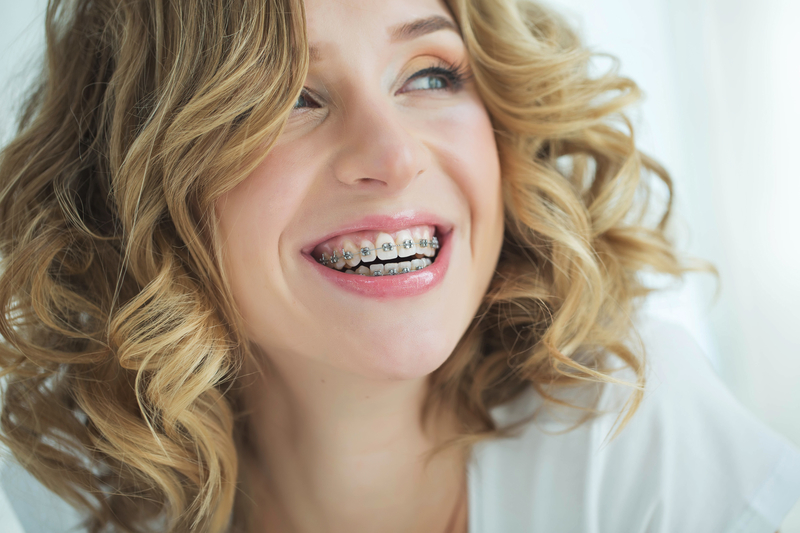
For many patients, getting braces is a big decision that affects oral health. How do you know whether you or your child needs braces, though? Some symptoms are obvious: misplaced or crowded teeth, or teeth that don’t meet normally. Other signs that you need braces are more inconspicuous, though, such as biting the cheek or a jaw that pops or shifts. While some of these symptoms are more serious than others, orthodontic care is the way to go to alleviate pain and correct any underlying issues. Learn about what signs you should be looking for to decide if braces are right for you with these tips!
What To Look Out For
As our teeth begin to erupt at a young age, they can fill into improper spaces or cause problems with adjacent teeth. Crooked or misaligned teeth aesthetically aren’t very pleasing for people, and most patients end up receiving orthodontic treatment during some point in their lives. Orthodontic problems don’t always mean crooked teeth, though. While there are some obvious signs that you might benefit from orthodontics, such as crowded teeth or an underbite/overbite, there are other symptoms that are less noticeable but equally as undesirable. The American Association of Orthodontics recommends that children have their first orthodontic visit between the ages of 7 and 8, but if certain complications are present, your child does not and should not wait until that age to be seen. If you have a young child, look for some of the following symptoms that warrant orthodontic care:
- Thumb or finger sucking
- Early, late or irregular loss of baby teeth
- Difficulty in chewing or biting
As children age, orthodontic problems will begin to show themselves, but some don’t appear until adulthood. No matter your age or prior orthodontic care, there are other symptoms that indicate a problem and should be addressed by an orthodontist. If you are struggling with a popping jaw, have to breathe through your mouth on a regular basis, are constantly biting your cheeks, and/or noticing teeth or jaws that are out of proportion to the rest of your face, you should have an orthodontic consultation. While many of these symptoms seem harmless or aren’t very noticeable, they can have long-term consequences that can negatively affect your oral health. Braces can remedy these issues so that your oral health isn’t compromised. It’s never too late for you to take charge of your oral health and get the smile that you deserve!
Advantages of Early Orthodontics
Not all kids will need orthodontic care, but many will. Meeting with your child’s dentist early on will help them determine whether your child would benefit from orthodontic treatment. If you have a child who needs an orthodontic issue remedied, there are certain advantages that come after receiving braces. Having your child evaluated by an orthodontist can help he/she observe the progress of incoming teeth, guide teeth into their ideal positions, monitor face and jaw development, detect hidden dental issues and reduce the risk of impacted teeth. For young children, orthodontic visits can sometimes be scary. Nonetheless, child orthodontic visits are simple and non-intrusive, so as to keep your child comfortable and happy. At Belmar Orthodontics, we do our best to give your child the care they need while making sure that their fears and questions are addressed. For adolescents, our options at include aesthetically-minded treatment options that will help your teen feel less self-conscious about braces. Braces can sometimes be seen as “dorky” or “uncool” for teens, but the list of options your teenager can choose from will give them plenty of choices to get straight teeth while still looking cool. Good oral health habits are started at a young age, and bringing your child in to see the orthodontist will help them establish those habits that will last a lifetime.
How You Can Benefit From Adult Orthodontics
Against popular belief, braces and orthodontic care aren’t just for kids and teenagers! In fact, one in five orthodontic patients is an adult; in just the U.S. and Canada alone, more than a million orthodontic patients are adults! You, as an adult, can benefit from the same care that young patients do and fix the orthodontic problems that you’ve been suffering from since childhood. As long as your teeth are healthy, you can receive orthodontic treatment at any age. The most common benefits of adult orthodontics include the following:
- More discreet treatment methods
- Correction of lifetime dental issues
- Faster treatment time than previous treatments
- Increased confidence and self-esteem
It’s important to note, however, that any previous orthodontic problems, such as periodontal disease or decayed/missing teeth, will need to be addressed before an orthodontic appliance can be placed. Once those issues are fixed, you’ll be fitted with braces and can continue your life just as usual. If you so choose, you can even opt in for hidden lingual braces or Invisalign clear, which will get you the straight teeth that you want while being completely unnoticeable. Speak with your orthodontist to determine which braces would be best for your needs before making any decisions.
Staying On Top Of Your Oral Health
Before any patient can receive orthodontic treatment, the health of their teeth, gums and mouth will first be evaluated. For this reason, it is important that children and adults alike are brushing twice a day and flossing on a nightly basis. The foods we eat also affects our oral health, as well. Especially during orthodontic treatment, certain foods, like sticky or sugary candies and food, can damage orthodontic appliances and make it easier for tooth decay to develop as plaque builds up on teeth. Brushing and flossing will partly diminish the effects of these foods, but not entirely. Make sure that you and your children are eating a healthy diet with minimal sugary snacks to avoid dental complications during treatment.
To ensure good oral health during and after orthodontic treatment, schedule an appointment with Belmar Orthodontics at (303) 225-9016 for a consultation.
How Upper Jaw Expansion Can Benefit Your Child
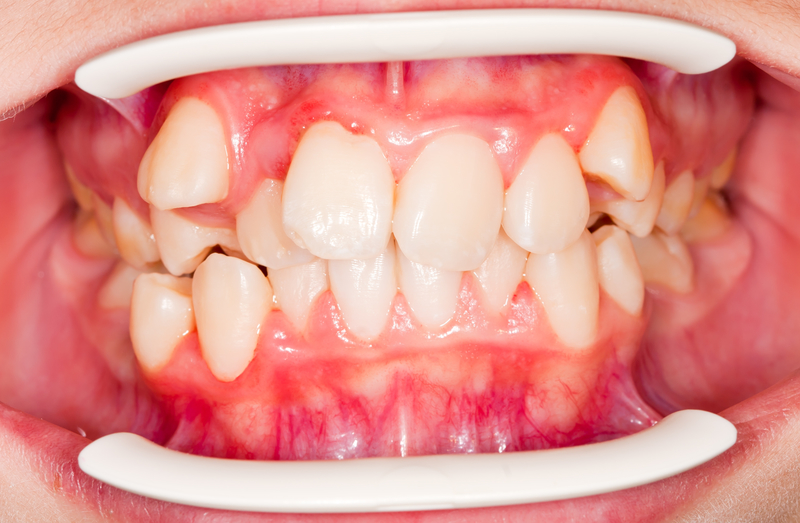
Upper jaw expansion is an orthodontic treatment that creates more space growth for developing kids by widening the circumference of the palate. This procedure helps correct crossbites, reduces overcrowding, and improves breathing ability. Most adolescents will receive this treatment before 16 years of age, but adults can also expand their upper jaw, if needed, as well. Read on to find out how upper jaw expansion works and what the advantages are with these tips!
Jaw Positioning and Malocclusion
Many patients deal with malocclusion, or crooked teeth and a poor bite. A poor bite refers to the way the upper and lower teeth line up, which is affected by the structure of the jaw. A “normal bite” consists of the upper teeth sitting slightly forward of the lower teeth, which allows for proper movement. Malocclusion is normally a cosmetic problem, but when it interferes with how teeth erupt, it can cause crooked teeth and tooth decay. A common cause of malocclusion is having too much or too little room in the jaw, which affects whether teeth grow in crowded or crooked. The shape and size of the jaw can also affect how severe someone’s malocclusion is, but thumb-sucking and tooth loss can also influence this process. For many patients, especially children, malocclusion is caused by a limited amount of space in the mouth for teeth to grow, so they either grow in crooked or the bite is altered. For this reason, many young dental patients receive upper jaw expansion treatments to allow more room in the mouth and prevent malocclusion. As more study and insight has been gained on the structure of the mouth, there are now more possibilities to fix incorrect bites, adjust occlusion and prevent crooked teeth starting from an earlier age.
Reasons For Upper Jaw Expansion
Upper jaw expansion is a specific treatment for widening the circumference of the palate to increase the perimeter of the dental arch in the mouth, which creates more space for teeth to grow. When there is enough room for teeth to grow, they are more likely to develop correctly. During childhood, palatal or maxillary expanders are used to aid this process. Through these expanders, dentists can help correct a crossbite that is caused by malocclusion. Normally, the upper teeth should close around the outside of the lower teeth, but when someone has a narrow palate, the opposite can occur and create a crossbite. As the upper teeth bite inside the lower teeth, an asymmetrical growth of the lower jaw can develop and change the symmetry of one’s face. This can cause serious complications if not addressed early on. Lastly, upper jaw expansion methods improve breathing ability, which is greatly affected by a narrow jaw. A narrow or deep upper jaw can make it difficult for a child to breathe through their nose and results in constant mouth breathing. While it doesn’t sound very serious, consistent mouth breathing keeps the mouth open at night, allowing for unfiltered bacteria to enter into the oral cavity, causing dry mouth and halitosis (bad breath).
Treatment Options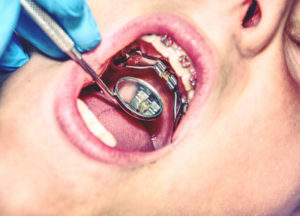
Upper jaw expansion is most successful when done at an earlier age while the mouth is still developing. For adults, those with a crossbite may only need a dental expansion instead of a palatal expansion, but may need surgery if palatal expansion is required to fix concerns. Depending on the age of the patient and the reason for treatment, a rapid palatal expander (RPE) may be used to increase the width of the jaw. The RPE is attached to the upper molars by bonding or cemented bands, and uses a special key that is used to widen the space by turning a screw in the appliance at certain points in time. This process puts extra pressure on the two halves of the upper jaw, which causes extra bone to grow between them. Gradually, by turning the screw with the key each day, the jaw widens to make room available for developing teeth. For adults, removable expanders can be used, as well, whenever the degree of expansion is minimal. Resembling a partial denture, removable expanders are typically made of chrome and recommended for adults as they more easily comply with treatment. After treatment, an orthodontic retainer may be given to maintain the space until all permanent teeth have developed. A third but least common option for expansion is a surgically assisted rapid palatal expander (SARPE), which is a combination of orthodontic treatment and surgery. This is used in the case that expansion cannot be achieved by the appliance alone. A custom appliance is made before surgery, and while during surgery, the upper jaw is intentionally fractured to separate it into movable sections. This allows the bone to grow between the fractures after the appliance is inserted.
Pros and Cons
Palatal expanders help straighten teeth, improve breathing and fix incorrect bites, but there are important suggestions to make note of. Since children are most likely to have one, a palatal expander, just like any orthodontic appliance, needs to be thoroughly cleaned each day to prevent plaque buildup and decay around the teeth. For young children, this can be difficult to do without help and can be easily overlooked, so parental supervision is essential. Additionally, the entire process can cost up to $3,000, depending on the degree of correction. For many, there is also some minor discomfort during expansion, but it is well worth it when you’re avoiding an inaccurate bite later in life.
For more information on which treatment option is best to fix yours or your child’s palate, call Belmar Orthodontics at (303) 225-9016! Our experienced team is dedicated to improving your oral health and getting you the smile that you deserve!
Does Your Child Really Need Braces?

We typically get our braces put on during our teenage to adult years, but how do you know whether your young child should have braces or not? Child orthodontics is a common practice for those children struggling with crooked, overlapping, or overcrowded teeth, or a misaligned jaw. There are many advantages for children as they receive braces earlier on in life as it can prevent future orthodontic treatment and guide incoming teeth into the proper position. Learn how to recognize whether your child needs braces through these tips!
When To Start
Young kids go through a lot of physical changes during adolescence, and some of those changes include jaw and teeth development. Orthodontics has become more and more common in young children to adjust certain orthodontic issues that occasionally occur as a child develops. Traditionally, orthodontic treatment begins once a child has lost most of their baby (primary) teeth and a majority of their permanent teeth have grown in, which typically occurs between the ages of 8 and 14. Even though braces is recommended at this age, it is a good idea to get an orthodontic evaluation for your child by the time they turn 7 years old; at this age, an orthodontist is able to detect early symptoms of orthodontic problems, such as an underbite or crossbite, which can cause severe complications and more treatment later on if left untreated at an early age. Bones are still growing during this age, so it is an ideal time to meet with an orthodontist to monitor bone and jaw development while evaluating any apparent orthodontic issues.
Advantages of Child Orthodontics
Although child orthodontics is only necessary if there are physical developmental issues within the mouth, receiving orthodontic treatment as a child has certain advantages. Visiting an orthodontist at an early age allows for observation of incoming teeth and reduces the risk of impacted teeth as your child loses their baby teeth and their permanent teeth take their place. As the orthodontist monitors your child’s teeth, they can help guide their teeth into the correct position as soon as they begin erupting, usually through braces or other orthodontic devices that help move teeth into the correct positions. Regular orthodontic visits also decrease the risk of hidden dental issues and permanent tooth extractions, as it allows for the orthodontist to adjust the jaw so that teeth crowding doesn’t occur.
Child orthodontics doesn’t always imply braces. Since a child’s jaw and teeth are still growing, many orthodontic issues, such as crowding, can be addressed before complications occur later on during adolescence. In this case, orthodontic treatment in young children is known as interceptive orthodontics. Many times, a child’s dental arch may be too small to fit all of their teeth. Just a few decades ago, it was a common practice to simply remove some permanent teeth to make space in the mouth. Now, though, child orthodontics can avoid this through the use of a palatal expander that expands the child’s upper dental arch, which allows adult teeth to emerge in a better position. Interceptive orthodontics can speed up the process of aligning teeth into the proper position and cause future treatment to be shorter and less involved.
How Much Does It Cost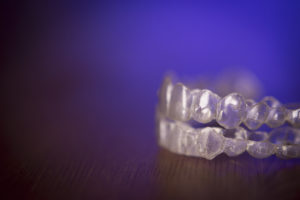
If braces are fit too early on a child, treatment can take longer and be more expensive. For this reason, it’s important to have regular orthodontic visits to monitor tooth and jaw development to ensure that whenever your child receives braces, it’s at the correct time. The braces that your orthodontist recommends will depend on your child’s type of problem that he or she has. There are three types of braces that most children will receive, and they each have different advantages and disadvantages:
- Traditional metal braces – Have steel ties holding the wires between the brackets in place. Cost is driven by what your orthodontist will charge for treatment, including multiple office visits.
- Damon braces – Do not have steel ties, but the brackets themselves hold the wires in place. Typically more expensive and can cost up to $8,000, but you pay for less dental appointments since the braces are self-ligating.
- Invisalign (or other clear or removable aligners) – Fit over the child’s teeth similar to a mouthguard. Your child will receive a number of aligners during the duration of their treatment, so cost is determined by the amount of aligners needed to achieve correction.
Just like adult orthodontics, child orthodontics can cost anywhere between $3,000 and $8,000, depending on what level of correction your child needs. If your child needs to have teeth extracted or be fitted for other appliances, the cost will most likely go up, as well. The way your child complies to orthodontic treatment will also affect the cost. Make sure that they are brushing and flossing everyday so as to avoid tooth decay, which will increase the cost of treatment as your dentist will have to treat around the braces to fix the decay.
Is It Necessary?
As mentioned before, whether your child needs braces or not at an earlier age is dependent upon their mouth structure and how their teeth form. For more information about child orthodontics or if you’re interested in scheduling a consultation, contact Belmar Orthodontics at (303) 225-9016!. Our experienced and highly trained orthodontic staff offers a variety of orthodontic treatments and technology so that you can be confident your children are receiving the best care available.
What Is an Orthodontist?
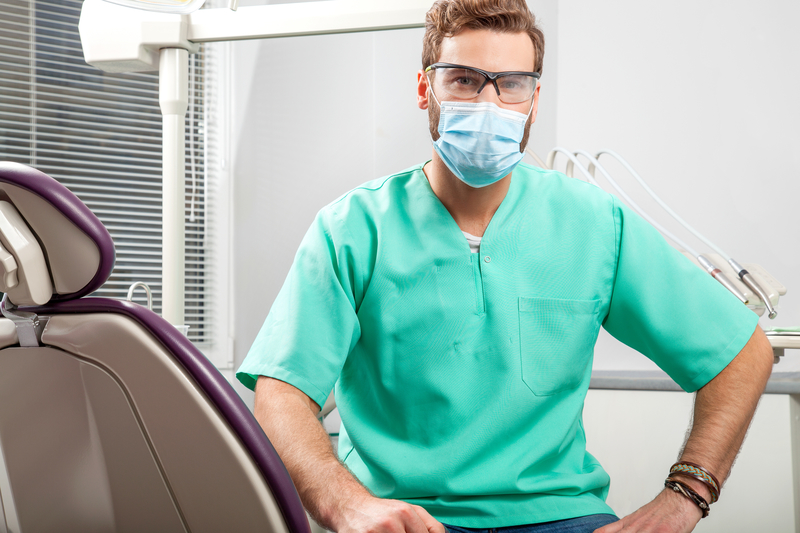
If you want to be an orthodontist, you have at least 10-12 years of schooling ahead of you. Orthodontists are very similar to dentists, but they perform completely different tasks in an office than a dentist would do. This is why you need to see both an orthodontist and a dentist if you have braces. See what services they provide that no one else can!
Want to Become an Orthodontist?
To become an orthodontist, a person has to commit to at least 10-12 years of education, training, fellowships and more. Even after that time, and orthodontist must continue testing and studying throughout the years in order to do orthodontics. An orthodontist is a professional that specializes in correcting crooked smiles, bite and alignment issues, jaw problems and aesthetics of the mouth.
They do this through braces, which commonly consist of metal bracket and wire appliances. Those appliances mold the teeth and jaws into specific alignments and positions. Through focused pressure with these mouth appliances, a person with major bite, alignment, or crooked teeth problems can find themselves with a beautiful, functional smile. This is especially beneficial for patients who have oral health problems that cause them speech impediments and difficulty biting, chewing, speaking and functioning normally.
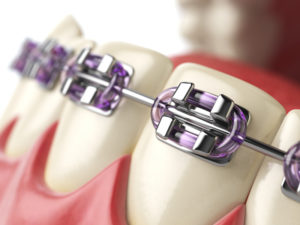
What Does An Orthodontist Do?
An orthodontist is a step above a dentist when it comes to their schooling. To become an orthodontist, a person must complete 4 years of undergraduate schooling at a university. They then apply for dental school and must be accepted. After 4 years of dental school, many students become dentists. However, orthodontists must continue to do at least 2 more years of orthodontic school and fellowships to do orthodontia as a profession.
Even though orthodontists are trained in dentistry, they do different work than dentists. They provide services such as correcting misaligned teeth and smiles, overbite, underbite, crossbite, and other alignment issues. Some are trained to provide surgical orthodontic procedures, or they work closely with an oral surgeon in correcting a misaligned jaw.
For patients who receive surgical orthodontics, an orthodontist will provide pre-surgical orthodontic care to align teeth and jaws as much as possible. A patient will then have oral surgery done to correct issues that can’t be done without surgery. Then, the jaws and teeth are aligned to their final, complete position through orthodontic appliances. If a patient doesn’t receive surgical orthodontics, they generally do 18-24 months of braces to straighten their teeth. Primarily, this is what an orthodontist does: they design braces (based on what type you pick) that fit your smile and that can shape it straight over the course of 1-2 years.
How It’s Different Than Dentistry
Both dentistry and orthodontics focus on oral health and improving a person’s smile. However, dentistry primarily strives to clean the teeth, fix tooth decay, perform root canals and treat gum disease. Patients also receive dental crowns, bridges and implants, and many cosmetic dentistry procedures. If you need teeth whitening or want to improve the look or health of your teeth, seek out a dentist. They can perform teeth whitening services, provide dental veneers and implants, and can help with oral health diseases.
However, if you need your teeth straight in the first place, you need an orthodontist. The American Dental Association recommends that every patient see a dentist at least twice a year to avoid major oral health diseases. You will need an orthodontist at various intervals in your life. However, you don’t see them as frequently throughout life like you would a dentist. When you have crooked teeth or problems with your jaws or alignment, you work with an orthodontist to fix the major issues. Then, a dentist fixes the more minor issues like the color of your teeth.
A dentist is not trained to straighten the teeth even if a dental office provides a transparent aligner service such as Invisalign. You always want to choose a trained orthodontist for properly straightening your teeth so oral issues don’t arise.
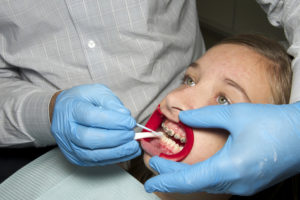
Do You Need Orthodontics?
When battling tooth decay, gum disease, bad breath and more, seek out a dentist. If you want to correct jaw, teeth, alignment, and bite issues, seek out an orthodontist. You may find yourself visiting both often if you receive braces as a child and then later as an adult or teen. Most orthodontists are trained to correct jaw and bite problems in children. You should always take your child in to see an orthodontist by age 7 if you already haven’t. The American Association of Orthodontics recommends this, as major bite and alignment issues of the jaws and teeth can be corrected easily when young. As a person grows older, the jaw hardens and becomes more permanently fixed, and oral health problems are much harder to correct.
If you are deciding to invest in braces, take a look at your teeth. Are they crooked? Do you find that either the upper or lower jaw overlaps the other significantly? Do you have problems speaking, eating, biting or chewing at times? You could benefit from orthodontics! Most people can significantly improve their oral health and their happiness (from having a beautiful smile) if they choose to see an orthodontist for help with their smile.
Dr. Hardy’s Office
Dr. Hardy is an award-winning orthodontist in Lakewood, CO. He is an active member of the American Dental Association and the American Association of Orthodontics. Dr. Hardy works with a team every day to make sure his patients young and old are cared for. At his center, he offers patients the option of getting ceramic, clear braces, traditional metal braces, lingual braces and Invisalign treatment. He can perform surgical orthodontics if needed and pediatric orthodontics. When choosing a center for your family, you want one that can treat patients of all ages and a center whose staff knows how to work really well with children. You can find that at Dr. Hardy’s Belmar Orthodontics office by calling (303) 225-9016!

